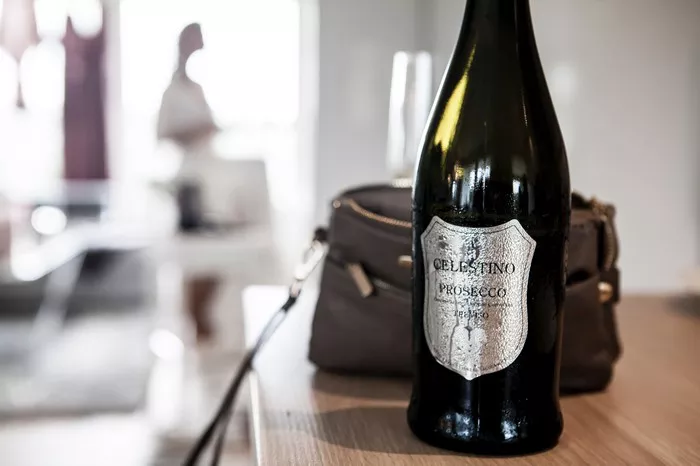Merlot, often celebrated for its lusciousness and versatility, has held a prominent position in the realm of wine appreciation. However, amidst the various interpretations and classifications, a topic often overlooked is whether Merlot is unfortified. Unveiling the nuances of this beloved varietal in its unfortified form illuminates a realm of subtleties and complexities that merit exploration.
Origins and Heritage of Merlot Unfortified
Merlot, a noble grape variety, traces its origins to the Bordeaux region of France. Its name, derived from the French word ‘merle,’ meaning blackbird, alludes to the varietal’s deep, dark hue. The grape thrives in diverse terroirs, contributing to its widespread cultivation across the globe. However, the question persists: is Merlot unfortified by tradition?
In its purest form, Merlot typically undergoes fermentation without fortification. Unlike fortified wines such as Port or Sherry, which involve the addition of spirits like brandy to the fermentation process, Merlot typically stands as an unfortified wine. This distinction allows Merlot to showcase its inherent characteristics without the influence of added spirits, revealing its truest expression.
Characteristics of Unfortified Merlot
Unfortified Merlot encapsulates a diverse spectrum of aromas and flavors, intricately woven by terroir, climate, and winemaking techniques. Its profile often boasts notes of ripe red fruits like plums and cherries, complemented by hints of herbs, chocolate, and even subtle earthy undertones. The absence of fortification enables the varietal to showcase its inherent elegance and finesse, offering a palatable experience that embodies its natural essence.
The texture of unfortified Merlot is another remarkable facet. It commonly exhibits a velvety-smooth mouthfeel, attributed to its soft tannins and balanced acidity. This tactile quality, coupled with its expressive flavor profile, distinguishes unfortified Merlot as a wine that encapsulates both richness and refinement.
Versatility and Pairing Potential
One of the captivating facets of unfortified Merlot lies in its versatility. This varietal gracefully adapts to various culinary pairings, enhancing a wide array of dishes. Its medium to full-bodied nature harmonizes with an assortment of cuisines, making it a cherished companion at the dining table.
The fruit-forwardness of Merlot pairs exquisitely with roasted meats, such as lamb or beef, accentuating their savory profiles. Additionally, the wine’s inherent acidity provides a delightful contrast when matched with tomato-based pasta dishes or even hearty vegetable stews. The adaptability of unfortified Merlot renders it an ideal choice for both casual gatherings and formal dining occasions.
Terroir Influence on Unfortified Merlot
Terroir, encompassing factors like soil composition, climate, and vineyard location, profoundly impacts the expression of Merlot. This varietal showcases an incredible ability to reflect the nuances of its terroir, allowing for a diverse range of styles across different regions.
In regions like Bordeaux, where Merlot often plays a significant role in esteemed blends, its characteristics are shaped by the maritime climate and gravelly soils. Here, Merlot contributes plushness and roundness to blends, complementing the structure and intensity provided by other grape varieties like Cabernet Sauvignon.
Conversely, in regions such as California’s Napa Valley or Chile’s Maipo Valley, Merlot thrives in diverse microclimates, yielding wines with pronounced fruit-forward profiles and softer tannins. The influence of terroir on unfortified Merlot exemplifies the grape’s adaptability and the intriguing diversity it offers to wine enthusiasts.
Winemaking Techniques and Unfortified Merlot
The craftsmanship behind unfortified Merlot involves a delicate balance of traditional and modern winemaking techniques. From fermentation to aging, each step plays a pivotal role in shaping the final product.
Fermentation of Merlot grapes usually occurs in stainless steel tanks or oak barrels, each imparting distinct characteristics to the wine. Stainless steel tanks maintain the fruit’s purity and freshness, while oak barrels contribute complexity through the infusion of subtle oak-derived flavors and tannins.
Furthermore, aging plays a crucial role in refining unfortified Merlot. Some wines undergo aging in oak barrels to enhance their structure and impart additional layers of complexity. However, others may be crafted to preserve their youthful vibrancy, offering a more immediate drinking experience. The diverse approaches in winemaking underscore the versatility and stylistic range of unfortified Merlot.
Consumer Trends and Appreciation for Unfortified Merlot
The appreciation for unfortified Merlot continues to evolve, reflecting shifting consumer preferences and market dynamics. While traditional wine-producing regions maintain a stronghold in crafting exceptional Merlot wines, emerging wine regions have also stepped onto the stage, presenting their unique interpretations of this varietal.
Furthermore, consumer interest in sustainability and organic practices has influenced winemakers to adopt environmentally conscious viticulture and winemaking methods. This emphasis on sustainability aligns with the ethos of preserving the authenticity of Merlot in its unfortified form, allowing its natural character to shine while respecting the environment.
Exploring Unfortified Merlot: A Journey of Discovery
In conclusion, the exploration of whether Merlot is unfortified reveals a captivating narrative that celebrates the grape’s innate characteristics and the artistry of winemaking. Unfortified Merlot, with its diverse expressions shaped by terroir and craftsmanship, remains an emblem of elegance and versatility in the world of wines.
From its origins in Bordeaux to its global presence, unfortified Merlot stands as a testament to the allure of a varietal that continues to captivate wine enthusiasts worldwide. Whether enjoyed on its own or paired with delectable cuisines, the unfortified Merlot experience beckons enthusiasts to embark on a journey of discovery, unveiling the richness and complexity held within each bottle.


